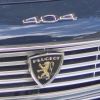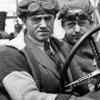Borgeson says that the white on black drawing originally appeared in the first edition of Pomeroy's Grand Prix Car. It's not in my later edition. Borgeson concludes that the white on black drawing actually shows the 1914 GP Sunbeam. Anthony Heal's Sunbeam book says that the GP engine differed from the TT engine of the same year by having finger, as opposed to L-shaped tappets, which fits.Second drawing is not Peugeot. See Automobile 1/4erly vol 20, no. 3, pg 303. Griff Borgeson wrote "Incorrectly identified as the 1913 3-liter Peugeot, it has polluted automotive literature ever since".
1912-14 Peugeots
#51

Posted 19 May 2011 - 09:19
Advertisement
#52

Posted 19 May 2011 - 10:27
steven
#53

Posted 20 May 2011 - 05:05
I think that both the 1914 Sunbeam racing engines - TT and GP - were derived from Peugeot practice. They obtained a 1913 L3 and stripped it down in the drawing room of Coatalen's house. How Coatelen obtained the Peugeot is still, I think, a subject of debate. There is a description of the copying process, and an interview with one of the Sunbeam engineers involved, in Motor Sport Novemer 1977 The 1916 Indianapolis engine and various WW1 aero engines were derived from Peugeot practice. The 1914 TT Humber was also closely related.Thank you for posting this - also for your thread - I had been wanting to find out which Sunbeam it was said to owe a bit to the 'charlatan' design - the other interest was in the unsuccessful orthodox contender - on which Bugatti consulted?
steven
After the war, and the formation of the STD Group, Ernst Henry was hired by them, but his engine for the 1922 GP was unsuccessful and virtually finished his career.
I'm not sure of the Bugatti reference you mention. I wasn't aware of any connection between him and the Charlatan designs.
#54

Posted 25 May 2011 - 10:19
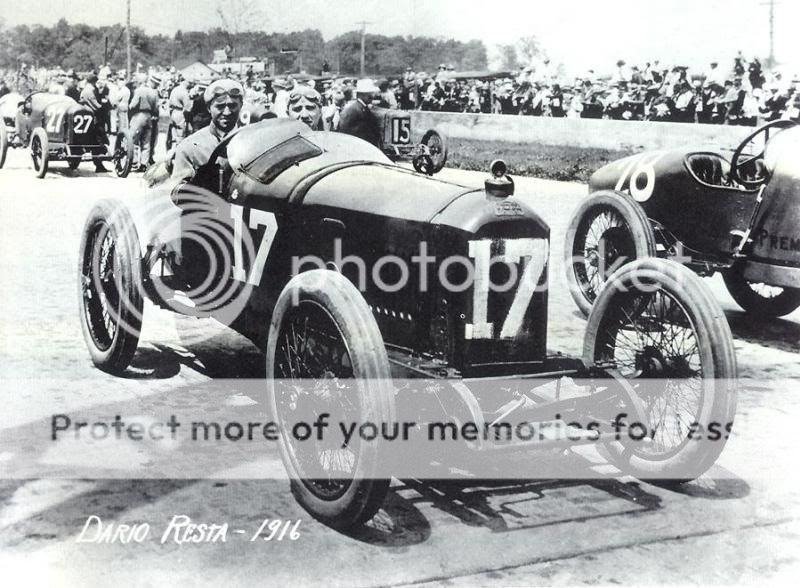
Edited by fixedhead, 25 May 2011 - 10:28.
#55

Posted 25 May 2011 - 10:27
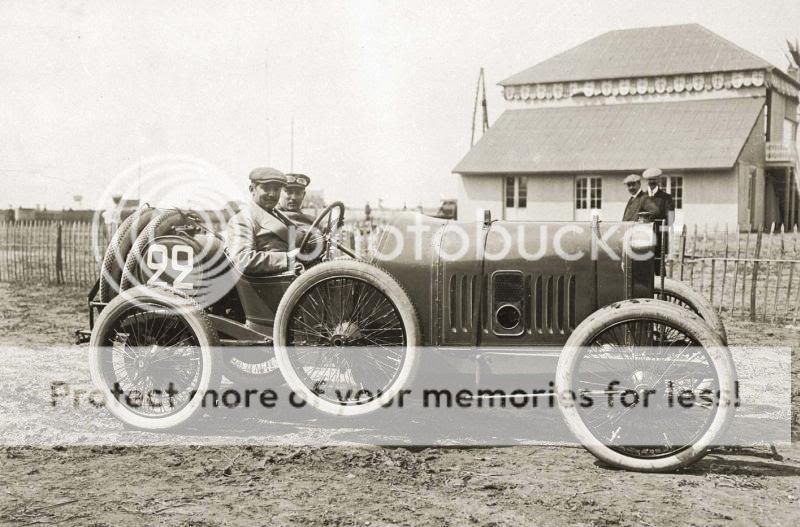
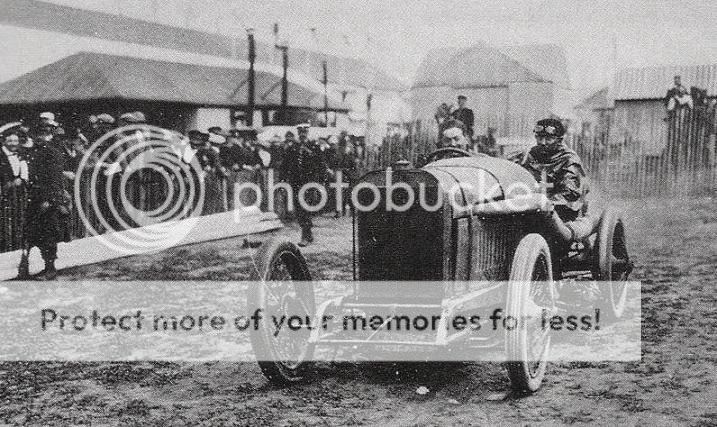
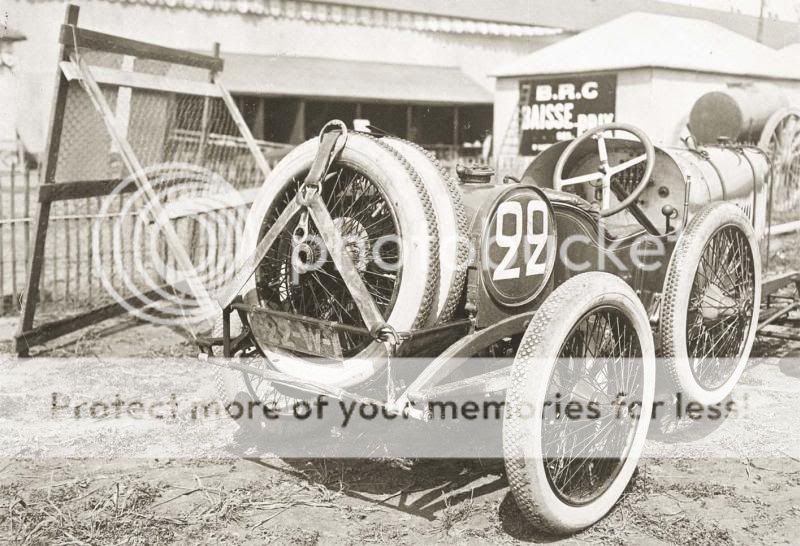


#56

Posted 25 May 2011 - 11:39
Yes. The photo was taken on the grid for the 1916 500. Next to Resta is the Premier #28 of Gil Anderson, and in the background are Tom Rooney's Premier #27 and Barney Oldfield's Delage #15.Here's the L45 in America, is this Indianapolis?
#57

Posted 25 May 2011 - 12:42
#58

Posted 25 May 2011 - 15:54
The Humber had a wider valve angle than the Peugeots and the the inlet and exhaust valves were reversed.Haven't we got a near replica in the 1914 TT Humber or is that a too somplistic view?
#59

Posted 25 May 2011 - 21:23

Les Charlatan's work had had competition in-house (Sochaux?) that some say involved Bugatti ...... I'm not sure of the Bugatti reference you mention. I wasn't aware of any connection between him and the Charlatan designs.
steven
Edited by fnqvmuch, 26 May 2011 - 12:15.
Advertisement
#60

Posted 26 May 2011 - 09:53
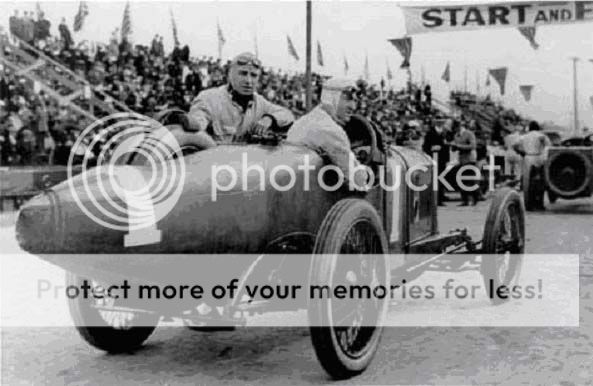
Resta at the 1916 Vanderbilt Cup, was this race held before Indianapolis?
#61

Posted 26 May 2011 - 12:09
" Tech Analysis
An Echo of the Past
The history and evolution of twin-cam engines
From the February, 2009 issue of European Car
...Peugeot drivers Jules Goux and Georges Boillot knew they needed a new kind of engine and convinced Zuccarelli to join their team. Then they went to Robert Peugeot, the president of the company, with an idea. They proposed an all-new racing engine to enter the Grand Prix circuit. He liked the idea so much that he commissioned a car from the three drivers as well as another car from young Ettore Bugatti. Peugeot decreed that the faster of the two designs would win the Peugeot name and the contract.
...
Bugatti built a car whose best speed was 99 mph. Les Charlatans beat that by more than 15 mph ..."
or, from the Peugeot Sport site recently;
"...
At the end of 1911, Robert Peugeot decided to mobilise his drawing office, engineers and drivers to prepare the best possible car. Concerned that his drivers would be tempted to leave for the opposition, he offered three-year contracts to Georges Boillot, Jules Goux and Paolo Zuccarelli, all aged 27.
These contracts also promised results-based bonuses: 30,000 Francs for winning a Grand Prix, 10,000 Francs for second place and 5,000 Francs for third. Based in Suresnes, near Paris, these three outstanding drivers – who were nicknamed the 'Charlatans or Quacks' – began work on the 1912 car and engaged in a battle, at a distance, with the 'Wizards', the engineers who worked out of Automobiles Peugeot's headquarters in Beaulieu.
....
the former wanted a powerful engine, while the latter were more in favour of working on a race version of an everyday voiturette. In the end, the engineers changed their strategy and succeeded in persuading Pierre Peugeot (Robert's elder brother) to secure help from Ettore Bugatti with the production of some out and out competition cars. It was only the beginning of the ensuing duel that marked the relationship between the 'Wizards' and the so-called 'Charlatans or Quacks' ..."
(my re-order of paragraphs here)
steven
Edited by fnqvmuch, 26 May 2011 - 13:25.
#62

Posted 28 May 2011 - 12:18
#63

Posted 28 May 2011 - 12:24
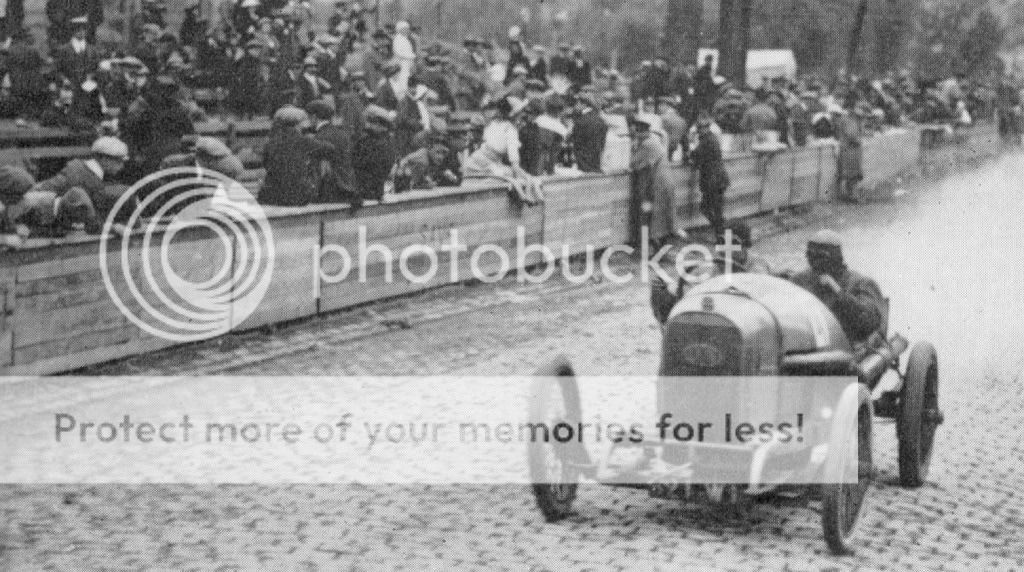
This car was not the success the L76 was, being beaten by the side valve Sunbeams. The twin cam engine was not the first time Coatalen copied, the Sunbeams had inclined Picker style valve gear
#64

Posted 28 May 2011 - 12:57
Grand Prix de France - 23rd July 1911 - Le Mans... who won this race?
1. Victor Hémery (Fiat S61) 56.71 mph
2. Ernest Friderich (Bugatti Type 13))
3. Fernand Gabriel (Rolland-Pilain)
#65

Posted 28 May 2011 - 14:35
Also, I don't think the Fiat was a tipo 61, it was more like a stripped touring car, maybe with a "hot" engine.
#66

Posted 28 May 2011 - 17:51
Except for the year before, of course.The Mercedes won the 1908 GP which rather upset the French as they had been somewhat supreme in earlier years,
#67

Posted 28 May 2011 - 19:26
I should really have checked your earlier thread before posting, Michael:Actually, Hémery was the only finisher - in those times, only cars that really finished were classified.
1911 French Grand Prix
#68

Posted 28 May 2011 - 21:47
Ok in 1907 it was Italy but the French cars had been tops in the earlier yearsExcept for the year before, of course.
#69

Posted 28 May 2011 - 23:01
#70

Posted 29 May 2011 - 06:24
The Peugeot seems to have lost its front brakes since the Grand Prix. When did this happen? It's difficultbto be sure, but they may be present in the Vanderbilt Cup picture in a later post.Here's the L45 in America, is this Indianapolis?
#71

Posted 29 May 2011 - 06:40
#72

Posted 29 May 2011 - 09:47
I quess brakes would not be needed as much at Indy as at the Vanderbilt being a flat out blind.The Peugeot seems to have lost its front brakes since the Grand Prix. When did this happen? It's difficultbto be sure, but they may be present in the Vanderbilt Cup picture in a later post.
#73

Posted 29 May 2011 - 09:57

#74

Posted 29 May 2011 - 10:03
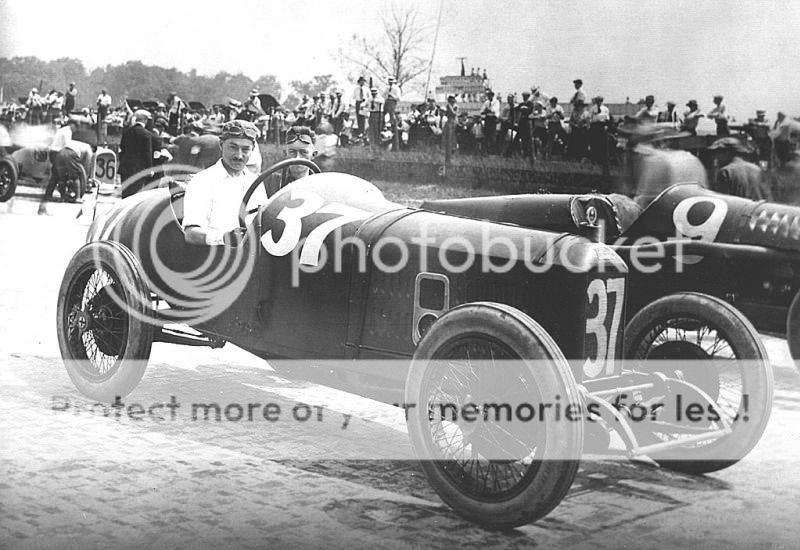
#75

Posted 29 May 2011 - 10:22
Was Indianapolis flat out in 1912? Pomeroy estimated the Peugeot's maximum speed as around 115mph and quoted a lap speed of just under 100mph.I quess brakes would not be needed as much at Indy as at the Vanderbilt being a flat out blind.
#76

Posted 29 May 2011 - 11:59
The Boillot pic is an EX6, with an L25 engine.
#77

Posted 30 May 2011 - 10:27
Of course not. Indy was never flat out until the late eighties, I'd guess, and then only in Q trim. Front brakes were generally regarded as optional on speedways until the late twenties. Some used'em, most not. Had probably more to do with the driving style, and weight of the brakes as well as aerodynamics. Even if not flat out, speedway curves are very fast, so you can back off a little before the corner, and then jump on the throttle to get a good run out of it. These cars had always "emergency" hand brakes, some acting on the transmission - easily good enough for outbreaking a rival.
The Boillot pic is an EX6, with an L25 engine.
Hy thats not far from flat out, so there would be a slight lift off to set the car up for the curve then full throttle again I guess, rather them than me!
The L25 was to be the vioturette for the 1915 season, 2500cc to meet the new regulations, is that correct? I recall reading somewhere that one went to the states, so it ran at Indy with an engine half the size allowed, are there any lap times to compare with the larger cars? I also read somewhere that it was an exceptional performer. Another L25 was used by the French forces as a fast transport was this the car Boillet drove before he moved on to piloting fighter planes? Or could it be the same car, how many were built? Three was usual I think but the war intervened....
Edited by fixedhead, 30 May 2011 - 10:28.
#78

Posted 30 May 2011 - 10:38
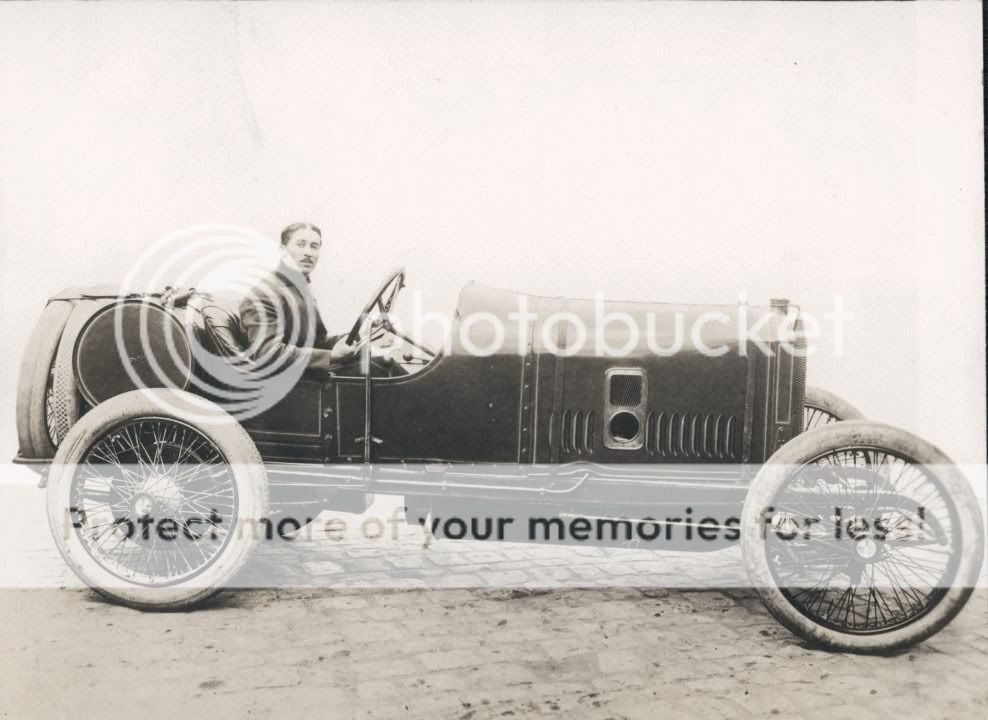

#79

Posted 30 May 2011 - 13:19
I thought that the L25 was built for the 1914 Coupe de l'Auto, which did not take place. André Boillot drove one in the 1919 Indianapolis 500. He blew a tyre and crashed when lying third with about 20 miles to go. This was against cars of double the Peugeot's capacity. Boillot also drove an L25 in the 1919 Targa Florio and won. Réville drove a similar car but crashed. According to Borgeson, quoting Charles Faroux, Boillot used the same car at Indianapolis and the Targa Florio. It was also used during the war as executive transport by the Peugeot company.The L25 was to be the vioturette for the 1915 season, 2500cc to meet the new regulations, is that correct? I recall reading somewhere that one went to the states, so it ran at Indy with an engine half the size allowed, are there any lap times to compare with the larger cars? I also read somewhere that it was an exceptional performer. Another L25 was used by the French forces as a fast transport was this the car Boillet drove before he moved on to piloting fighter planes? Or could it be the same car, how many were built? Three was usual I think but the war intervened....
Advertisement
#80

Posted 31 May 2011 - 09:34
I thought that the L25 was built for the 1914 Coupe de l'Auto, which did not take place. André Boillot drove one in the 1919 Indianapolis 500. He blew a tyre and crashed when lying third with about 20 miles to go. This was against cars of double the Peugeot's capacity. Boillot also drove an L25 in the 1919 Targa Florio and won. Réville drove a similar car but crashed. According to Borgeson, quoting Charles Faroux, Boillot used the same car at Indianapolis and the Targa Florio. It was also used during the war as executive transport by the Peugeot company.
Thanks for the correction, its a long time since I read on this subject, should check my facts.
#81

Posted 31 May 2011 - 09:40

#82

Posted 31 May 2011 - 11:03
so this doesn't add much, but, FWIW;1912 L76 engine, pity the photo is not better quality, the only photo ' - the artist saw - ' of the complete engine.

Edited by fnqvmuch, 31 May 2011 - 11:10.
#83

Posted 02 June 2011 - 10:33
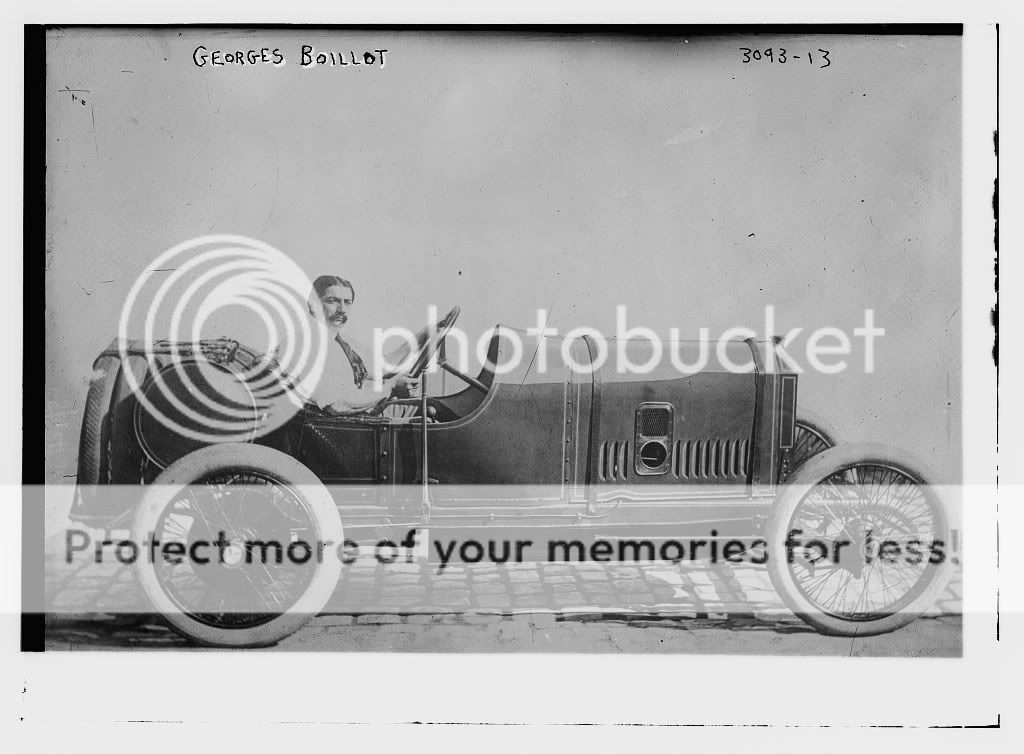
Edited by fixedhead, 02 June 2011 - 10:34.
#84

Posted 02 June 2011 - 10:38
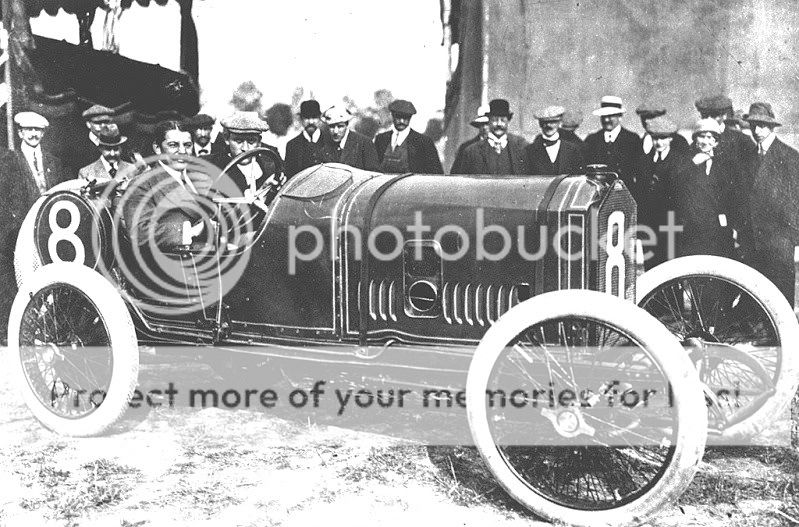
#85

Posted 12 June 2011 - 13:07
http://gallica.bnf.f...eot 1912.langEN
Edited by fixedhead, 25 June 2011 - 10:28.
#86

Posted 12 June 2011 - 13:12
http://gallica.bnf.f...eot 1912.langEN
Edited by fixedhead, 25 June 2011 - 10:29.
#87

Posted 13 June 2011 - 07:10
In 1912, the 3-litre was entered as Lion-Peugeot (in principle the motorcycle + voiturette branch), the 7,6-litre as Peugeot.
The photo is significant since it shows that the 1912 3-litre had its camshafts driven by a vertical shaft (just like the 1912 7,6-litre and in contradistinction to the 1913 3-litre) - and, indeed, it seems that there were only two valves per cylinder, unless the single valve spring was responsible for two valves.
Additional photos from the Bibliothèque Nationale/Paris:
1912 3-litre during the war
http://gallica.bnf.f...8/btv1b69526799
http://gallica.bnf.f...8/btv1b6952680z
1912 7,6-litre during the war
http://gallica.bnf.f...8/btv1b9043762v
1912 7,6-litre block, crankcase, rear axle
http://gallica.bnf.f...8/btv1b9021038m
http://gallica.bnf.f...8/btv1b9021043x
http://gallica.bnf.f...8/btv1b9021042h
Boillot in the 1912 7,6-litre prototype
http://gallica.bnf.f...8/btv1b9020860w
Wonderful portrait of Ernest Henry
http://gallica.bnf.f...8/btv1b9021389z
#88

Posted 14 June 2011 - 10:27
Its strange that Peugeot never take any credit for what was a great success in 1912 and 1913 for France. Perhaps Robert Peugeot just managed and lent his name to the project the finance coming from elsewhere A.C.F members maybe, perhaps there is something buried in the Peugeot archives. Just a few thoughts.
#89

Posted 14 June 2011 - 12:14
http://gallica.bnf.f...ot sport.langEN
Edited by fixedhead, 25 June 2011 - 10:30.
#90

Posted 14 June 2011 - 12:16
http://gallica.bnf.f...eot 1912.langEN
Edited by fixedhead, 25 June 2011 - 10:27.
#91

Posted 14 June 2011 - 16:16
Here's the production car of the period showing the cross shaft accessory drive at the front. This is what I saw dismantled and it looked so similar to the L76 drawings I'd seen that I wondered if a production crankcase had been adapted for the L76. But not so.
May I ask if you have any further similar chassis photos of these Edwardian Peugeots, please?
I need some to help with the rebuild of my own car!
Thanks
#92

Posted 16 June 2011 - 07:41
"The racing cars are the production of M. Vaselot, the chief engineer of the Peugeot Co."
(Vaselot with a single "s")
According to the contemporary French press, Charles de Vasselot (with double "s") was in the Peugeot pits during the 1912 GP de l'ACF and the 1912 GP du RACB (Belgian AC). Other names (without first name) appearing in the 1912 Peugeot pits were Koechlin, Grémillon (probably Marcel Grémillon, later responsible for the 1920 Indy Peugeot/3-OHC 5-valve head), Péan (probably Paul Péan, the riding mechanic and motorcycle rider), Puecli, and Alavoine.
The name Vaselot/Vasselot did not reappear in later descriptions of the Peugeot racers.
The crankshaft layout of the 1912 7.6-litre (five plain bearings, pressure lubrication) and the two-valve head of the 1912 3-litre did not really match Ernest Henry's other designs. Possible that these 1912 details came from Vasselot and/or Grémillon.
#93

Posted 17 June 2011 - 12:07
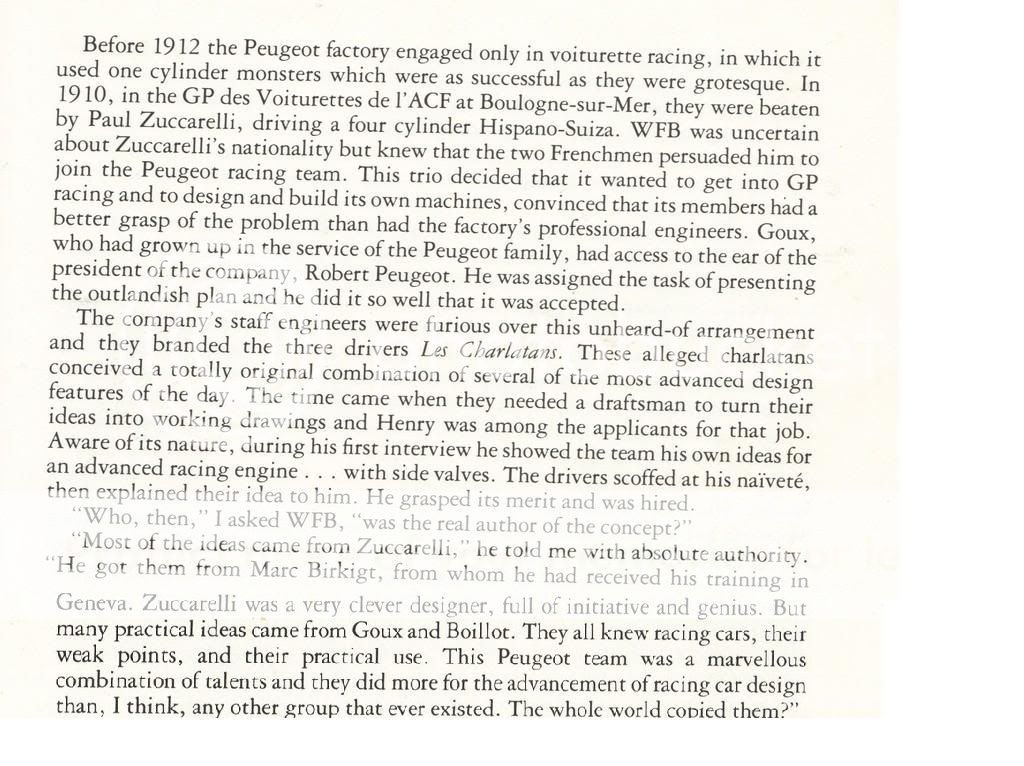
#94

Posted 17 June 2011 - 12:12
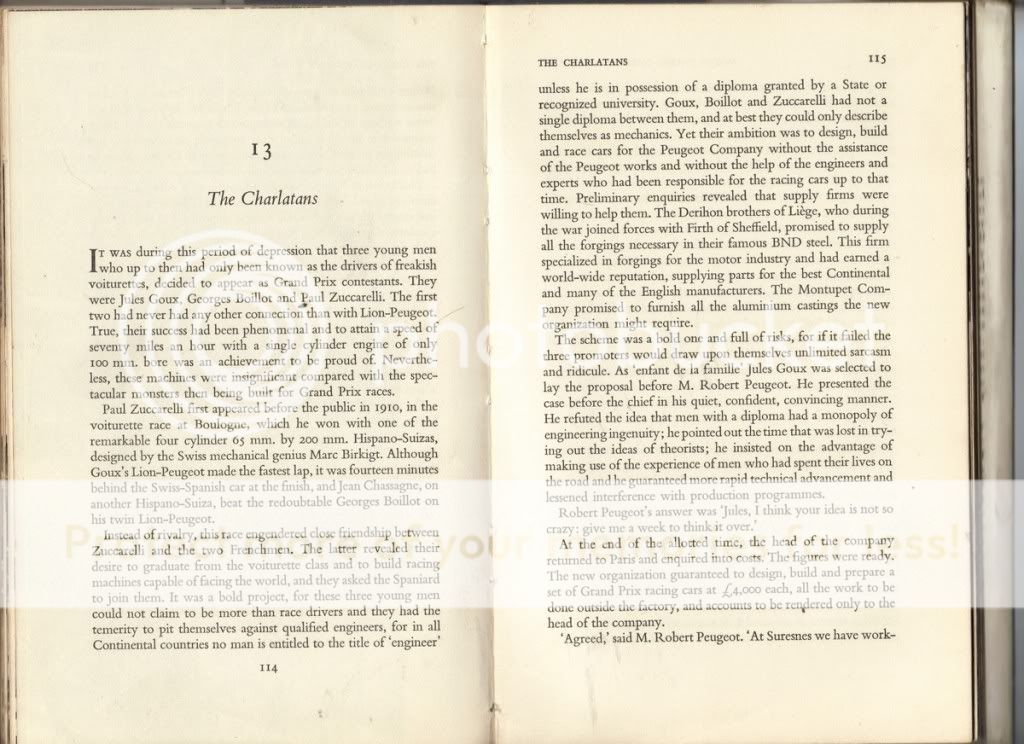
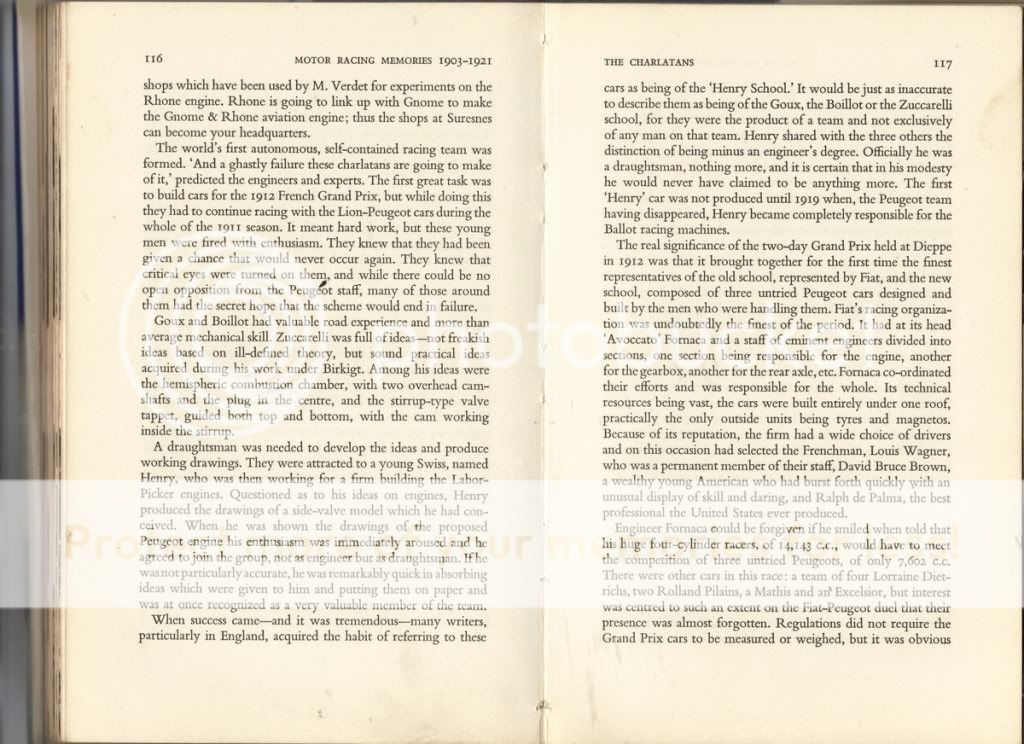

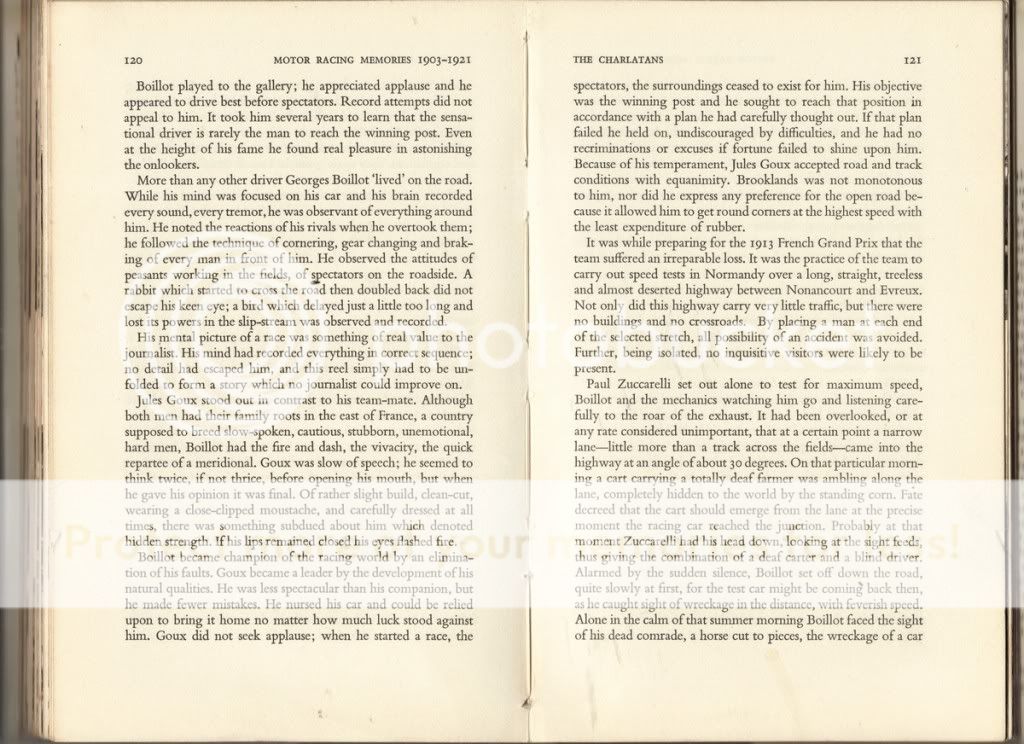
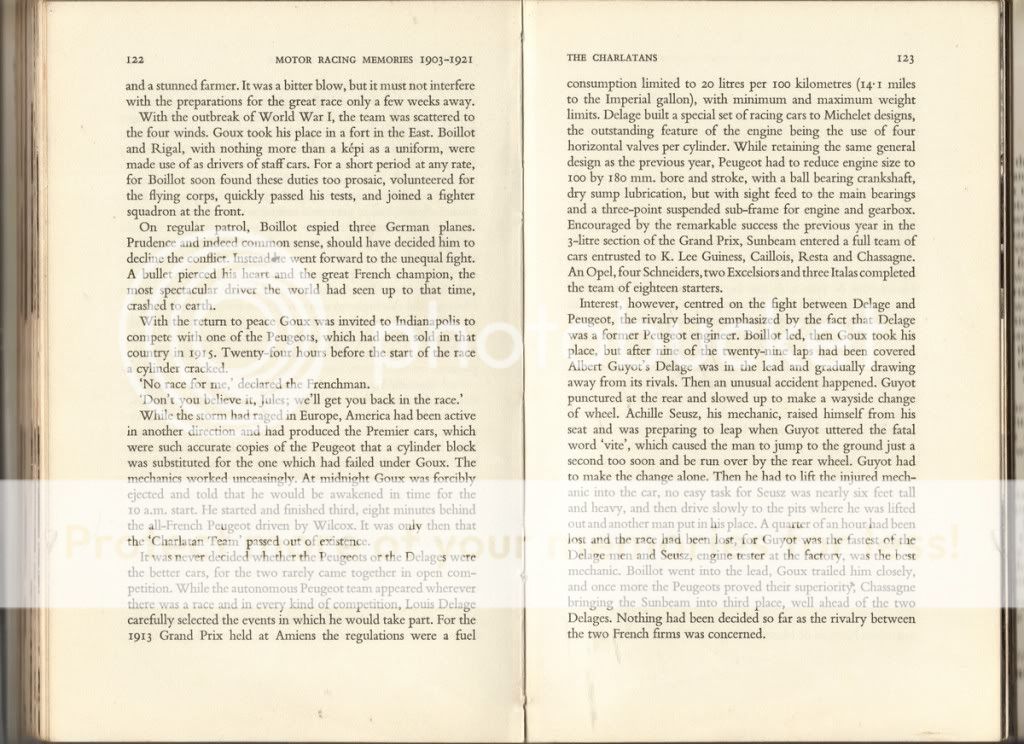
#95

Posted 17 June 2011 - 12:16
What had been Henry's role? Bradley said that he was over rated, uninventive, and "merely a draftsman". Rene Thomas said that he was under rated, full of ideas,
and that none of the drivers was capable of designing an engine. Pilleverdier, head of the Peugeot racing department at that precise period, told Yvelin " Henry was a model,
even though Bradley minimised his role. He was truly creative. The peculiarities of the combustion chamber and valve train belonged exclusively to him".
(Borgeson page 21).
Paul Yvelin (Peugeot executive) recalled that both Marcell Gremillion and Louis Pilleverdier had told him thet the Labour aviation engine had indeed been the springboard for
arriving at the charlatan engine.
(Borgeson page 101).
Hugo Byttebier aviation historian "The Labor aviation engines of 1910-11 indeed had been outstanding,I am pleased to learn that Henry had been their designer"
(Borgeson).
Edited by fixedhead, 17 June 2011 - 12:27.
#96

Posted 17 June 2011 - 12:19
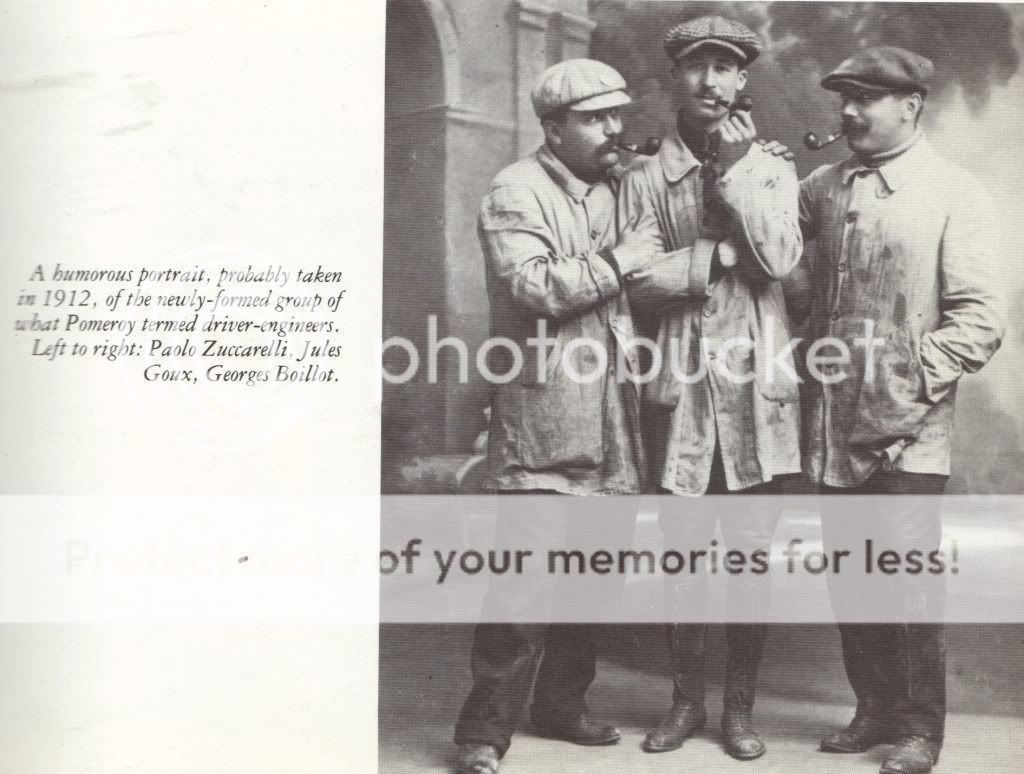
#97

Posted 17 June 2011 - 12:20
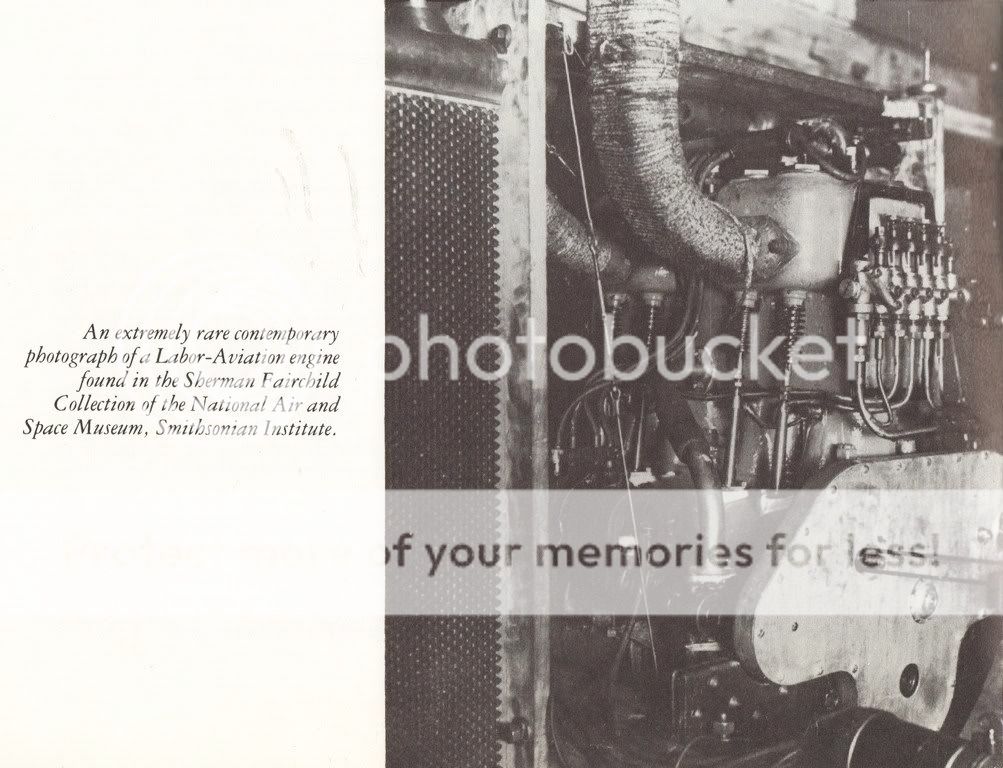
#98

Posted 17 June 2011 - 12:21
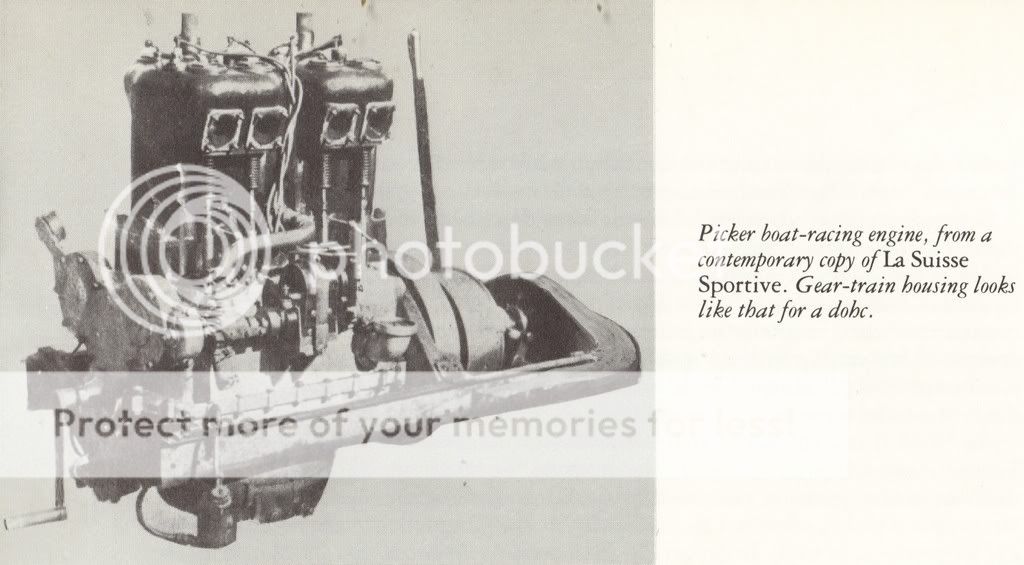
#99

Posted 17 June 2011 - 12:22
http://gallica.bnf.f...eot 1912.langEN
Edited by fixedhead, 25 June 2011 - 10:25.
Advertisement
#100

Posted 17 June 2011 - 12:24
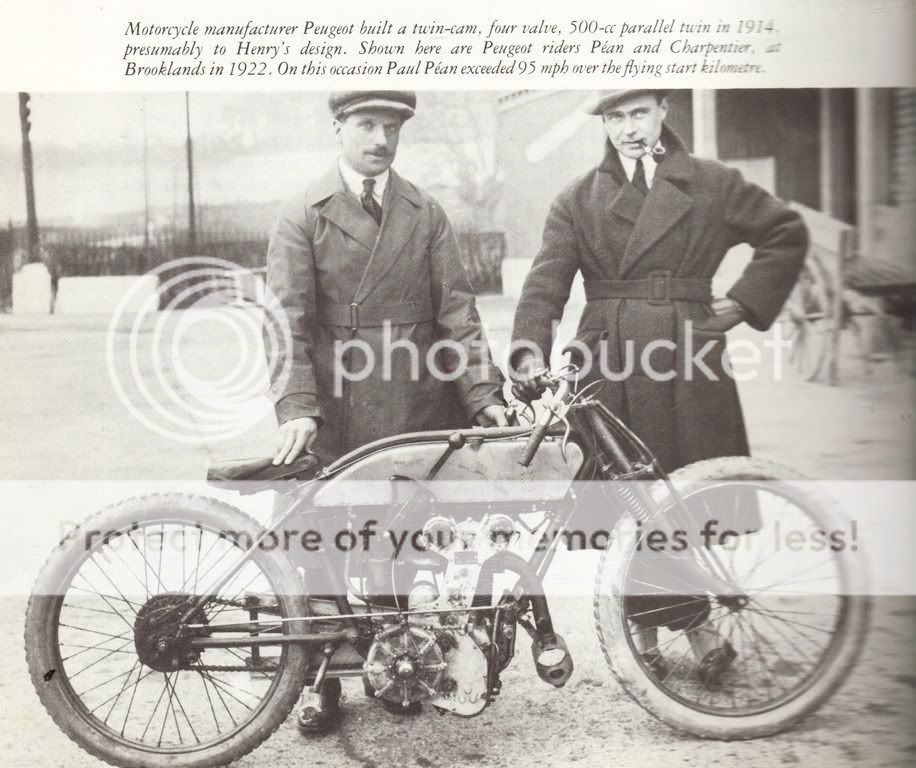
Edited by fixedhead, 17 June 2011 - 12:25.




